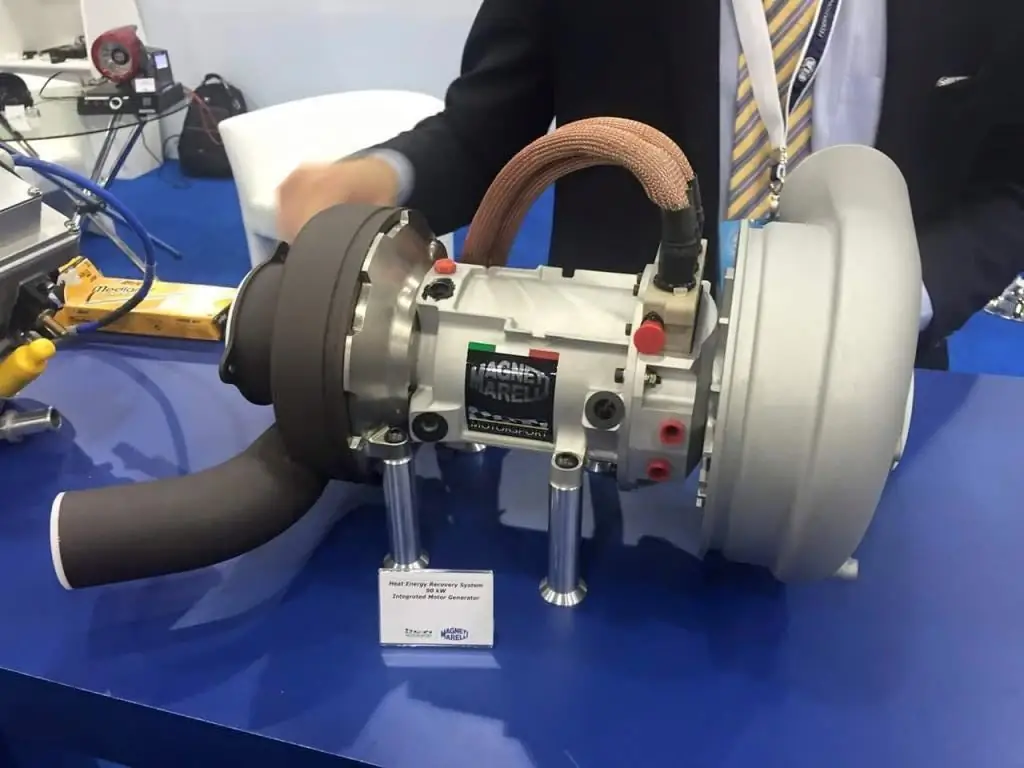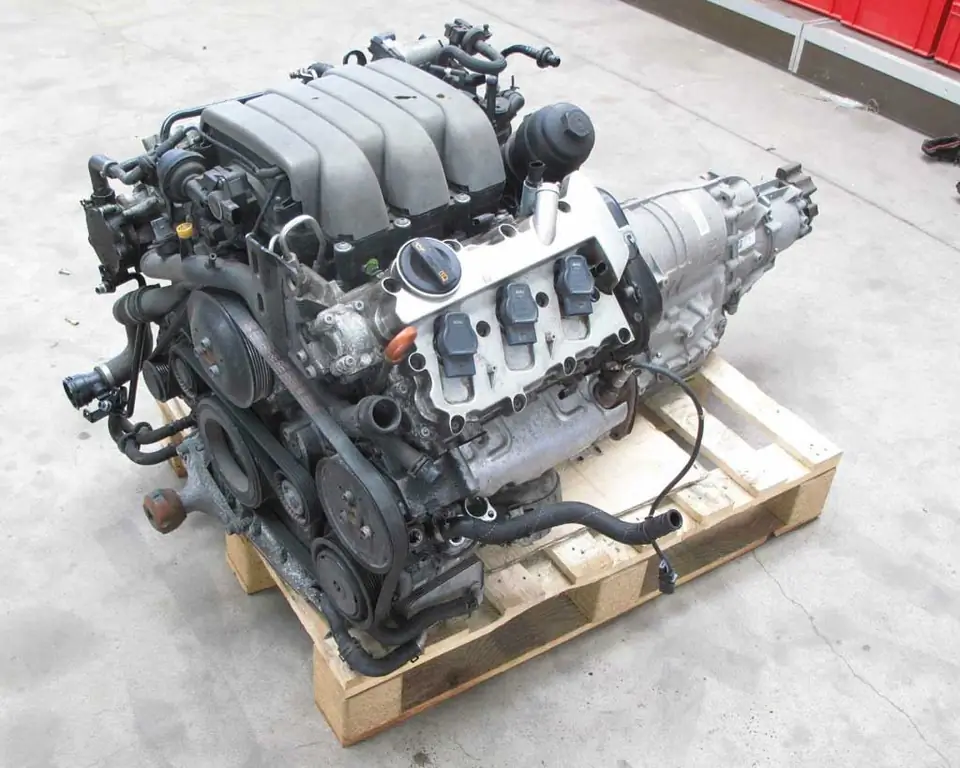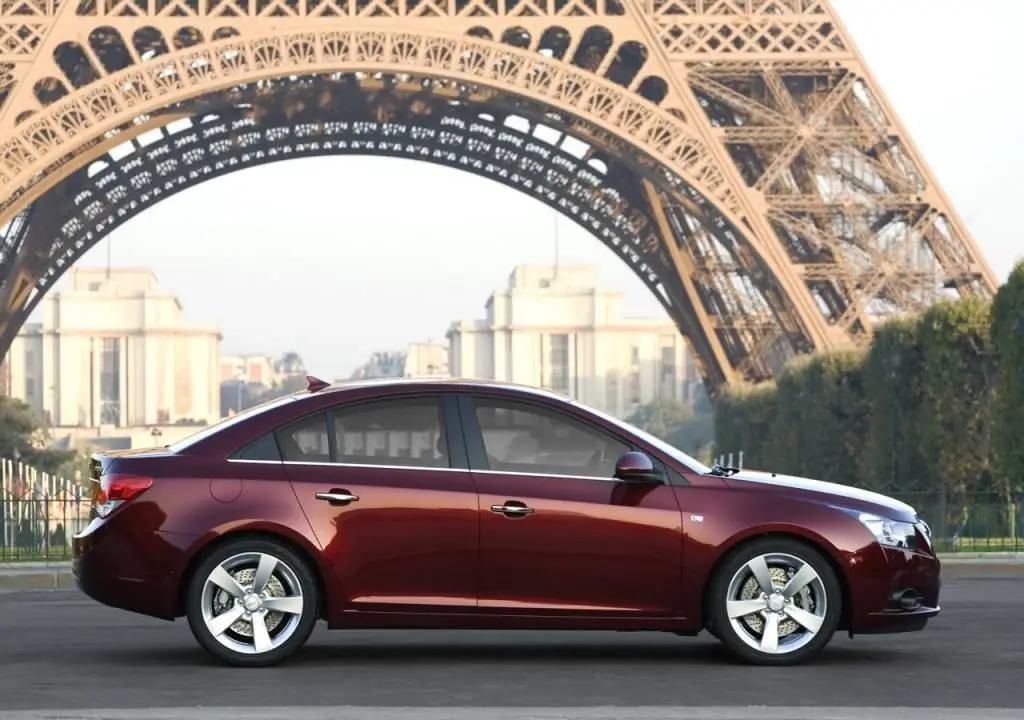2025 Author: Erin Ralphs | [email protected]. Last modified: 2025-01-22 21:14:12
Moskvich-408 is a car that became popular six years before the first copy of the legendary "penny" rolled off the assembly line. He fell in love with a few domestic motorists at that time with an unusual design, simplicity of construction, and most importantly, reliability. The owners especially liked the power unit. Despite the meager, by today's standards, power - 50 l / s, the Moskvich-408 engine turned out to be unusually "high-torque" and unpretentious.
It is about him that will be discussed further, but first a little about the car itself.
The history of the creation of "Moskvich-408"
Serial production of the car began in 1964. The 408th was a small class car and was a five-seat sedan with rear-wheel drive. However, its appearance was not something revolutionary, most of the nodes were tested onprevious models of "Moskvich" - 402nd and 407th. They "migrated" to the new car with virtually no changes. For example, the Moskvich-408 engine differs from its predecessors only in the carburetor.
True, from a philistine point of view, the novelty of a model is determined not by innovations hidden under the hood, but by an attractive appearance. With that, the 408th was all right. The exterior of the car was brand new. The roundness characteristic of the Moskvich disappeared, the car became more angular and acquired features that were more characteristic of the American automobile industry of those years. However, classical elements were also guessed in it. This is apparently due to the fact that at the first stages of work, the designers experimented with the appearance of a new car using plasticine, they simply sculpted it on a real 407th model.

Specifications
When designing the car, the main emphasis was on reliability and ease of operation. At that time, Soviet motorists, not spoiled by services, even made complex repairs on their own. Therefore, most parts of the car are quite simple, which is sometimes done at the expense of efficiency. Nevertheless, despite the modest technical characteristics already at that time, the Moskvich-408 engine allowed it to accelerate to 129 km / h. True, the car reached a hundred in 29 seconds, which, of course, is not impressive today.
By the way, the 408 was a regular participant in various international races and rallies and oftenwon prizes in them. This was facilitated by reliable drum brakes and 178 mm of ground clearance. The permissible weight was 1340 kg, of which 990 weighed the car itself. The volume of the tank is 46 liters. The front suspension was linkage, the rear suspension was spring, which provided acceptable comfort when driving on the highway and made it possible to feel confident on a country road. These are only the basic, most necessary data about the car, the characteristics of the Moskvich-408 engine will be discussed a little later.

Power unit design
408th was equipped with a four-cylinder gasoline engine with a displacement of 1400 cm3. It was an exact copy of the power unit of the 403rd model. The exception was the K-126 carburetor, which was first installed only on the 408th and was quite innovative for its time. The fact is that it had a two-chamber design, which, combined with the optimization of the intake manifold, made it possible to increase power to 50 l / s. In addition, for the first time, not a cast-iron, but an aluminum cylinder head was installed on a car. This, among other advantages, significantly reduced the weight of the Moskvich-408 engine.
The cylinder block has an in-line design and is cast in gray, and liners pressed into it are made of anti-corrosion cast iron. A low compression ratio (about 7) made it possible to refuel the car with both A-76 and A-72 gasoline, while the technical parameters inherent in the Moskvich-408 engine remained practically unchanged. The power unit was obliged by the high-torquedecent torque at low crankshaft speed. In this case, this value is about 9.3 kgf at 2700 rpm.

Cylinder-piston group
CPG on "Moskvich-408" consists of the following parts:
- Pistons.
- Block sleeves.
- Piston rings.
- Fingers.
The car's pistons were made of aluminum with a tinned skirt surface. The normal gap between it and the surface of the cylinder is about 0.05 mm. To compensate for it, three compression rings made of cast iron were used. The top of them is covered with porous chlorine, which reduces the dependence of its service life on high temperatures. The lower compression ring, due to the design features, in addition to its main purpose, performs the function of an oil dump. It works in tandem with the latest oil scraper installed on the piston.
It should be noted that all rings have the same (about 0.6 mm) clearance at the joint and different heights in the groove. Specific values are shown in the table.
| Top compression ring | Average | Lower | Oil scraper ring | |
| Height clearance in the piston groove, mm | 0, 036-0, 063 | 0, 030-0, 065 | 0, 065-0, 1 | 0, 037-0, 082 |
The pin is attached to the piston bosses with retaining rings. It is made from carbon steel. For greater wear resistance, the piston pin is hardened up to 1.5 mm from its surface.
Cylinder block completely cast iron. From below it is closed with a stamped oil pan, on the right - by a cover of the valve mechanism chamber. Under it, on a ledge, the five-digit number of the Moskvich-408 engine is stamped. To get to it, it is advisable to remove the coarse oil filter housing.

Crank mechanism
The car was equipped with a forged carbon steel crankshaft. Its rotation is carried out in main bearings with steel liners. They are fixed to the crankcase with cast-iron covers. Remarkably, each of them has an arrow; during installation, it must be directed forward. This is about self-repair. On the inside of the liners there is an annular groove designed for their lubrication. Oil is supplied to the connecting rod bearings through specially drilled holes in the crankshaft housing.
In the front part, a camshaft drive gear and a fan pulley were installed, to which a crank ratchet was attached, which at that time was far from superfluous. A cast-iron flywheel is attached to the rear of the crankshaft with four bolts. A crown for a starter is pressed onto it and technological marks are applied.
Timing mechanism
The camshaft on the car was installed in the cylinder block and had a gear drive directly from the crankshaft. This is clearly seen in the photo of the engine"Moskvich-408" in section. The valves have a classic arrangement and are located in the cylinder head. The force on them is transmitted using a system of rods, pushers, rocker arms and cams. In addition, the car's fuel pump is driven by the camshaft, and on early models, the windshield wipers are also driven.
The rod is a metal rod with which the camshaft controls the valves. One end of it rests against the rocker, the other against the pusher - a steel cap with a high-strength working surface. It is intended to transfer force from the cam to the rod, since their direct contact would lead to rapid wear of both.
Rocker arms are located on two independent axles and put on them directly without bushings or bearings. Only the extreme ones are rigidly fixed, the inner ones are held in place with the help of spacer springs.

Lubrication system
Moskvich-408 engine has a combined lubrication system. This means that some of its components (camshaft bearings, rocker arms, etc.) are lubricated under pressure, while the rest are sprayed or "gravity". To fully fill the car with oil, 4.3 liters are required. The level, like on modern cars, is controlled by a dipstick. At the same time, it does not have the usual min and max labels, they are replaced by unusual inscriptions today - “full” and “shares”.
The oil pump is driven by the camshaft. The entry of foreign particles into the system is prevented by a coarse filter. Minimumthe pressure in the system at idle in a new car is at least 0.5 kg/cm2.
Power system
The car is equipped with a K-126P carburetor. Thanks to him, it was possible to achieve improved performance of the Moskvich-408 engine. Carburetor 2-chamber with sequential opening of throttle valves. This made it possible to ensure economy at idle and low speeds, as well as to increase the dynamics and power of the engine under load. The opening of the secondary chamber is carried out using a toggle mechanism when the primary throttle valve reaches a certain position.
Factory diaphragm-type fuel pump with the possibility of manual pumping. On the first Moskvich models, it was fastened with two bolts diagonally, later the holes began to be located more habitually - along the edges. The upper part of the fuel pump is a so-called sump - a kind of filter, however, coarse cleaning. It is made of glass to control the injection of gasoline.

Ignitions and electrical equipment
The system consists of the following elements:
- Ignition coil B1. Identical ones were installed on Pobeda and GAZ 21.
- Distributor with mechanical interrupter.
- Ignition wires with built-in high resistance.
The electrical equipment of the car is 12-volt. The initial power supply for consumers and the ignition system of the Moskvich-408 engine is carried out from a battery. During operation, it is recharged by a generator. DC.
Modern exploitation
Despite its very respectable age, the 408th can still be found on the roads of the former USSR. True, for the most part, their performance is supported by the hands of tireless collectors, who try to keep native parts on the car as much as possible. Every year it becomes more and more difficult, so enthusiasts most often resort to various alterations. As a rule, tuning the Moskvich-408 engine comes down to adapting modern parts for it.
This includes the alteration of the VAZ fuel pump and the installation of a more powerful alternator. The lubrication system also causes many problems. The fact is that a replaceable filter element was used in the car. Naturally, it has long been out of stock. Therefore, the owners make changes to the system and install a new consumable. The modification of the oil filter of the Moskvich-408 engine consists in the fact that a modern element is screwed into the engine through a special adapter, just like on current cars.
Engine modifications

The car, in addition to the usual one, also had an export version. In this case, a more powerful (55 l / s) engine was installed on it. In addition, forced power units were installed on cars designed for circuit racing and rallying. There is an opinion that the 408s were equipped with one and a half liter power units. It's not, just a new engine for a whilewas placed on the old body, but the car already had the index "Moskvich-412".
Recommended:
Electro-turbine: characteristics, principle of operation, pros and cons of work, do-it-yourself installation tips and owner reviews

Electric turbines represent the next stage in the development of turbochargers. Despite significant advantages over mechanical options, they are currently not widely used on production cars due to the high cost and complexity of the design
What is a frame SUV: an overview of models, specifications, manufacturers, pros and cons

What is a frame SUV: definition, features, poles and cons, design. Frame SUV: review of models, specifications, manufacturers, photos. New, Chinese and best frame SUVs: description, parameters
Contract engine: how to understand what it is? Definition, characteristics, features of work, comparison, pros and cons

If the engine is out of order and it is impossible to overhaul, then the question naturally arises, where and what kind of engine to buy. A contract engine is a good alternative to a new original one and is much better than a used engine from disassembly
"Chevrolet Cruz": the pros and cons of the car, specifications, equipment, features and owner reviews

In Russia, Chevrolet Cruze hatchbacks and sedans were produced at the company's plant in St. Petersburg (Shushary). With a station wagon body, cars were produced at the Avtotor plant in Kaliningrad. Reviews about this car are somewhat contradictory, especially in the Russian automotive community. In this article, we will analyze the pros and cons of the Chevrolet Cruze
RB-engine from NISSAN: model, characteristics, features, pros and cons of operation

The RB engine series was produced by Nissan from 1985 to 2004. Although these 6-cylinder inline engines were installed in a relatively small number of models, they gained great fame, primarily due to sports options such as the RB25DET and especially RB26DETT. They are still widely used in motorsport and tuning to this day

